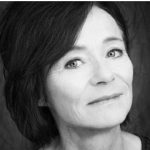USA: 74 prosent flere moskeer
I løpet av siste tiåret har andelen moskeer i USA steget med 74 prosent, til 2 106 moskeer. Moskeer etableres typisk i forsteder, og ses i sammenheng med bedret økonomi i muslimske samfunn og økt nasjonalt mangfold blant muslimer: somaliere skal ha sin moské med sin trosretning, bosniere likeså.
Av Hege Storhaug, HRS
The number of mosques in the United States grew by 74 percent in the past decade, and mosques are increasingly found in the suburbs, according to a national survey by a coalition of Muslim groups.
The 2011 U.S. Mosque Survey counted 2,106 mosques in the United States.
«This building boom is indicative of the growing financial resources of the Muslim community as many Muslims have lived in the U.S. for many decades now and their financial resources have improved,» wrote study author Ihsan Bagby, an associate professor of Islamic studies at the University of Kentucky.
Ravi Mohiuddin attends one of the San Francisco Bay Area’s newer mosques, though as with many Islamic centers in the Bay Area, his West Valley Muslim Association in Saratoga is a work in progress.
The mosque opened in a rented hall in 2007 amid two insurance offices, a hair salon and a lighting store. Just a mile from Apple headquarters, the storefront attracts Apple employees and other Silicon Valley Muslims who come for daytime prayers.
But the congregation has grown from a few dozen to hundreds, and adherents are raising money to build a mosque down the street.
Bagby pointed to several factors contributing to the growth: an influx of Muslim refugees from Somalia, Iraq, West Africa and Bosnia; increasing ethnic and denominational diversity within the Muslim community spurring new mosques reflecting different schools of thought; and the expansion of the Muslim population into suburbs and new regions around the country.
Because many Muslim organizations don’t seek loans from financial institutions because of the Islamic belief prohibiting interest, Bagby said, followers have to increase their membership and confidence before building a mosque.
For Mohiuddin, geography was the biggest reason for launching the mosque in Saratoga.
«The nearest facility for offering prayers and meeting others was in Santa Clara, 20 minutes away,» Mohiuddin said. «For Muslims, we go to the nearest facility for our Friday prayers. And then on weekends, we may go to another … closer to home.»
Along with counting each mosque, researchers asked hundreds of imams and other mosque leaders about their religious practices, schools of thought and attitudes toward American society.
More than 98 percent believe Muslims should be involved in American institutions, 91 percent believe Muslims should be involved in politics and 55 percent disagreed with the idea that America is immoral.
The poll is the first of its kind since similar surveys by the same group of researchers in 2000 and 2001. The new survey shows some perspectives have changed.
About 25 percent of mosque leaders believe American society is hostile to Islam, compared to 56 percent who thought so in 2000.
Mohammad Chaudhry is one of those who believes most Americans welcome their Muslim-American neighbors.
The non-Muslim community helped rebuild his Islamic Center of the East Bay in Antioch after an arsonist gutted the mosque in 2007.
Most mosques are of the Sunni tradition, but the West Coast has the largest number of Shiite mosques. About 1 percent of mosque leaders said they followed the fundamentalist Salafi school, a strict, literalist interpretation of the Quran, and most of those headed African-American congregations.
The survey was conducted by the Hartford Institute for Religion Research, the Association of Statisticians of American Religious Bodies, the Council on American-Islamic Relations, the Islamic Society of North America, the Islamic Circle of North America and the International Institute of Islamic Thought.

